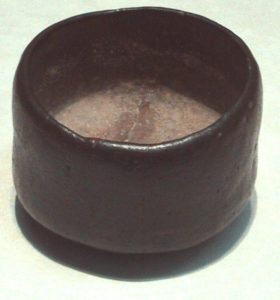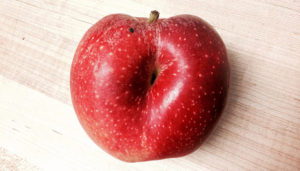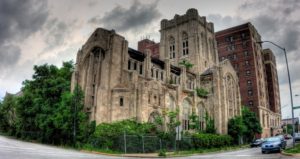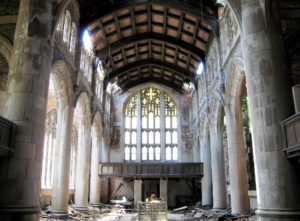In Japan, the aesthetic concept of wabi-sabi (first brought to most Americans’ attention by TV’s Bart Simpson, of all “people”) is one of the characteristics that dramatically sets their culture apart from that of the United States.
In Japan, they tend to appreciate the uniqueness of a flaw or irregularity in the new product (it gives it personality: making it an object only one person owns), and the decrepitude of an old object. Wabi-sabi is a world view centered on the acceptance of transience and imperfection. The aesthetic is sometimes described as one of beauty that is “imperfect, impermanent, and incomplete.”Characteristics of the wabi-sabi aesthetic include asymmetry, roughness, simplicity, economy, austerity, modesty, intimacy, and appreciation of the ingenuous integrity of natural objects and processes.
Here in the USA, we worship visual perfection. And not just in inanimate objects, either: We warehouse our old people in commercial operations we like to call “homes”, so we don’t have to see their deterioration on the street. Those with gross deformities, like goiters or facial cancers, don’t dare go into public if they can’t afford cosmetic surgery (which is common, what with our being in the only industrialized country in the world without universal health care).
In most other nations, by comparison, the ancient and the afflicted can walk in plain view down the street without drawing looks of horror, or even outright anger at their polluting of the visual environment. In our drugged, commercial American cocoon–where pharmaceuticals and buying new stuff fixes everything–we don’t like to be reminded that death and disease exist.
We Americans waste vast amounts of fresh produce because it isn’t “perfect”. An estimated 25-40 percent of all food grown, processed and transported in the United States is never eaten. We don’t seem to care if it’s loaded with toxic pesticides–or if it’s rendered tasteless, nutrition-less, and potentially carcinogenic by genetic engineering–as long as it looks good.
“Produce is art,” says Jordan Figueiredo, solid waste specialist for the Castro Valley Sanitary District in California’s Bay area. “It’s amazingly nourishing. It should be celebrated.” He uses various social media accounts at @UglyFruitAndVeg to show lovable images of outcast fruit and vegetables. He says this helps people understand the issue better and makes them want to celebrate–rather than waste–produce.
As so often happens, North America trails behind Europe in embracing its love for ugly fruit and vegetables. France’s third-largest supermarket chain, Intermarché, launched a campaign in March of 2014 to get consumers to see the beauty of ugly produce. Television and print ads hailed the attractiveness of “the grotesque apple,” “the failed lemon,” “the disfigured eggplant,” “the ugly carrot” and the “unfortunate clementine.” One aisle of a store just outside Paris is devoted to “inglorious” produce and sold at a 30% discount. It’s hugely successful.
Of course, Americans aren’t alone in demanding that even old things look new. Restoration of historic buildings and old artwork is a multi-billion-dollar per year business worldwide. In most cases, that’s a good thing, since it enables them to enjoy a new life, often with a new, more relevant purpose.
But some ancient art is actually more beautiful in its aged state. And leaving a few well-built abandoned buildings unrestored adds a bit of age diversity to the visual environment.
In Gary, Indiana, they seem to get this concept. City Methodist Church, a grand, Gothic cathedral, has been abandoned for almost 50 years. Yet you can see it all over the internet, on Flickr and Instagram, and in movies like Transformers 3. It’s billed as “one of the best known and most popular Midwest locations for urban explorers.”
The church, which has been vacant since the 1970s as the steel industry bottomed out in Chicago and northern Indiana, has enjoyed an unlikely second life as a particularly beautiful, even sublime, decaying structure–what some call “ruin porn,” the ugly American name for wabi-sabi.
The church was in the news this week after it became 1 of 33 winners of the Knight Foundation’s Cities Challenge, which awards cities around the country with grant money for their best project ideas. Gary’s Redevelopment Commission will receive $163,333 to transform City Methodist into a more official tourist destination for the city.
The church is one of the most visited places in the city, despite the fact that it’s not safe to explore. “The fact that the building, in its current condition, is not structurally sound has not deterred visitors,” says Sarah Kobetis, Gary’s deputy director of planning.
“So turning the space into a ruins garden felt like a mutually beneficial way to preserve what’s left of one of the city’s most notable structures, while also creating a new public amenity in downtown Gary for both tourists and community residents to enjoy,” she continued.
Gary isn’t the only Rust Belt city that has iconic “ruins” with considerable architectural value–and it’s not the first city whose ruins have become popular tourist destinations in their decay. But Gary might be the first to use these ruins in a purposeful, strategic manner to boost their economy.
About the Author:
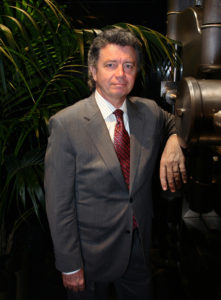 Storm Cunningham is the publisher of REVITALIZATION, an author, and a consultant on resilient economic growth.
Storm Cunningham is the publisher of REVITALIZATION, an author, and a consultant on resilient economic growth.
His 100+ global client list includes: US State Department, Boeing, Harvard University, Ontario Chamber of Commerce, Israel Planners Association, European Property Italian Conference, University of Guadalajara, National Arbor Day Foundation, U.S. Environmental Protection Agency, American Institute of Architects, Project Management Institute, US Embassy (Poland), Governor of Montana, Canadian Urban Institute, Santee Cooper, Urban Land Institute, University of Texas, Leadership Cleveland, and many more.
A former Green Beret SCUBA Medic, Storm lives in Arlington, Virginia, and is the author of two highly-acclaimed books: The Restoration Economy (Berrett-Koehler, 2002), and Rewealth (McGraw-Hill Professional, 2008). His upcoming 3rd book is RECONOMICS (coming January 2020).
See full Fast Company article by Kelsey Campbell-Dollaghan.
See Rustik Magazine article “The inner beauty of ugly produce“.


